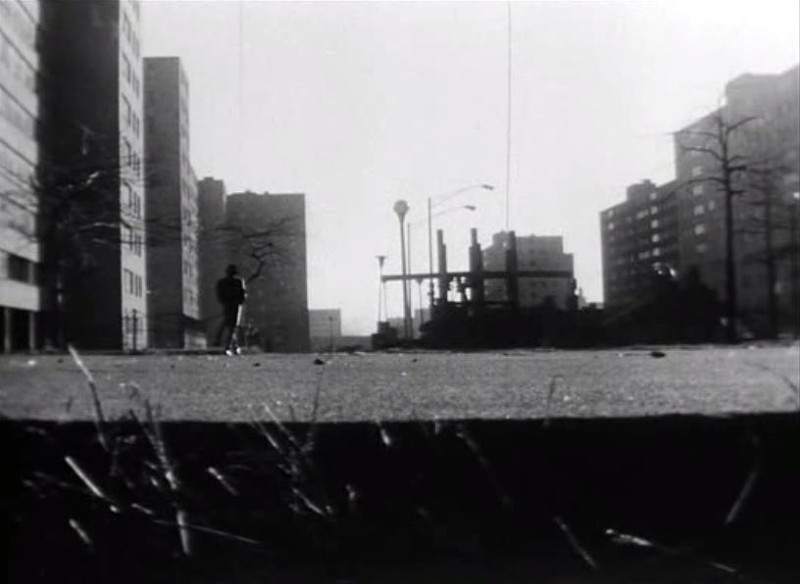Life in Pruitt-Igoe Comes Alive in More Than One Thing, Playing Sunday at SLIFF
[
{
"name": "GPT - Leaderboard - Inline - Content",
"component": "41932919",
"insertPoint": "5th",
"startingPoint": "3",
"requiredCountToDisplay": "3",
"maxInsertions": 100
}
]
Billy Towns was a child of Pruitt-Igoe.
His family had come to St. Louis from Mississippi, and in 1965 they moved into one of the 33 high-rise apartment blocks built with federal dollars in the mid-1950s. Pruitt-Igoe was intended to be a groundbreaking vision of public housing and urban renewal. But by 1968, when Towns turned fifteen, conditions in Pruitt-Igoe were fast deteriorating.
That was the same year Towns met a young filmmaker named Steve Carver. A graduate student at Washington University, Carver convinced the teen to participate in a film project about his day-to-day life in Pruitt-Igoe. The partnership produced More Than One Thing, a 30-minute film with a crackling jazz soundtrack and striking black-and-white imagery. The student film was screened perhaps a handful of times in St. Louis before promptly disappearing.
This Sunday, More Than One Thing returns to St. Louis for its first public screening in more than four decades, as part of the St. Louis International Film Festival.
The film owes its resurrection to The Pruitt-Igoe Myth, a celebrated 2011 documentary that chronicled the housing project from its optimistic birth to its infamous downfall and nationally-televised demolition in the mid-1970s. While researching the documentary, producer Brian Woodman came across a scrap of a paper in the archives of the State Historical Society of Missouri, advertising a 1969 screening for More Than One Thing. There were few details — only that it had been directed by a Steve Carver of Washington University.
"No one seemed to have ever heard of it," says Woodman. "We were desperate to find great Pruitt-Igoe footage. So much of what’s available is all the negative imagery that’s been in the press, mainly the last few years — the buildings being imploded. At that point it became a hunt to figure out where this film was."
Woodman got to work, cold-calling every "Steve Carver" in Los Angeles. Eventually, he found the right one. The Wash. U. student had gone on to become a Hollywood director, most notably helming the 1983 action classic Lone Wolf McQuade starring Chuck Norris and David Carradine.
Carver permitted the documentary team to sample footage from his 1969 student film, splicing shots of Billy Towns tramping around St. Louis with the larger story of how Pruitt-Igoe went from beacon of hope to cautionary tale. "We were so grateful," Woodman says.
Woodman is now the curator for the Film and Media Archive at the Washington University Libraries, and he recently announced the successful preservation of More Than One Thing for future generations of viewers, historians and researchers. The preservation was completed earlier this year with the support of a Basic Preservation Grant from the National Film Preservation Foundation. Woodman says the film will soon be available for home viewing.
As for the film itself, More Than One Thing is less a documentary than a impressionistic portrait of cocky and naive teenager at a particular place and point in time. Towns narrates over the footage, describing his hopes for a college basketball scholarship, his appreciation for fine clothes and his game with the ladies. The film treats Pruitt-Igoe as a backdrop, with the viewer's focus directed at the strapping young man wandering St. Louis in a hat and overcoat.
Towns is 62 now. He joined the Army after graduating high school. When injuries forced his discharge in the early 1990s, Towns created a community youth development organization in Lawton, Oklahoma, where he eventually retired and still lives to this day.
"I’m still inspired by this film," Towns says in phone interview. He visits St. Louis about once a year to see his remaining family, and he'll be joining a panel discussion on Sunday after the film screening.
"It was quite challenging to live there," Towns says, recalling his childhood in the housing project. "When we looked across the street, it seemed like there was some hope over there, if you can get out before somebody throw a brick at you or stab you up."
Looking back, Towns suggests that Pruitt-Igoe's failures came from both government abandonment as well as the influx of drugs and crime. Even so, he retains a certain appreciation for the housing project.
"Making that film, it gave me a sense of wanting to do right with all the wrong that was going around me," he says. "And I am thankful for Pruitt-Igoe. It was a big lesson to me. And I’m sure it was for everybody that lived there."
Follow Danny Wicentowski on Twitter at @D_Towski. E-mail the author at [email protected]






